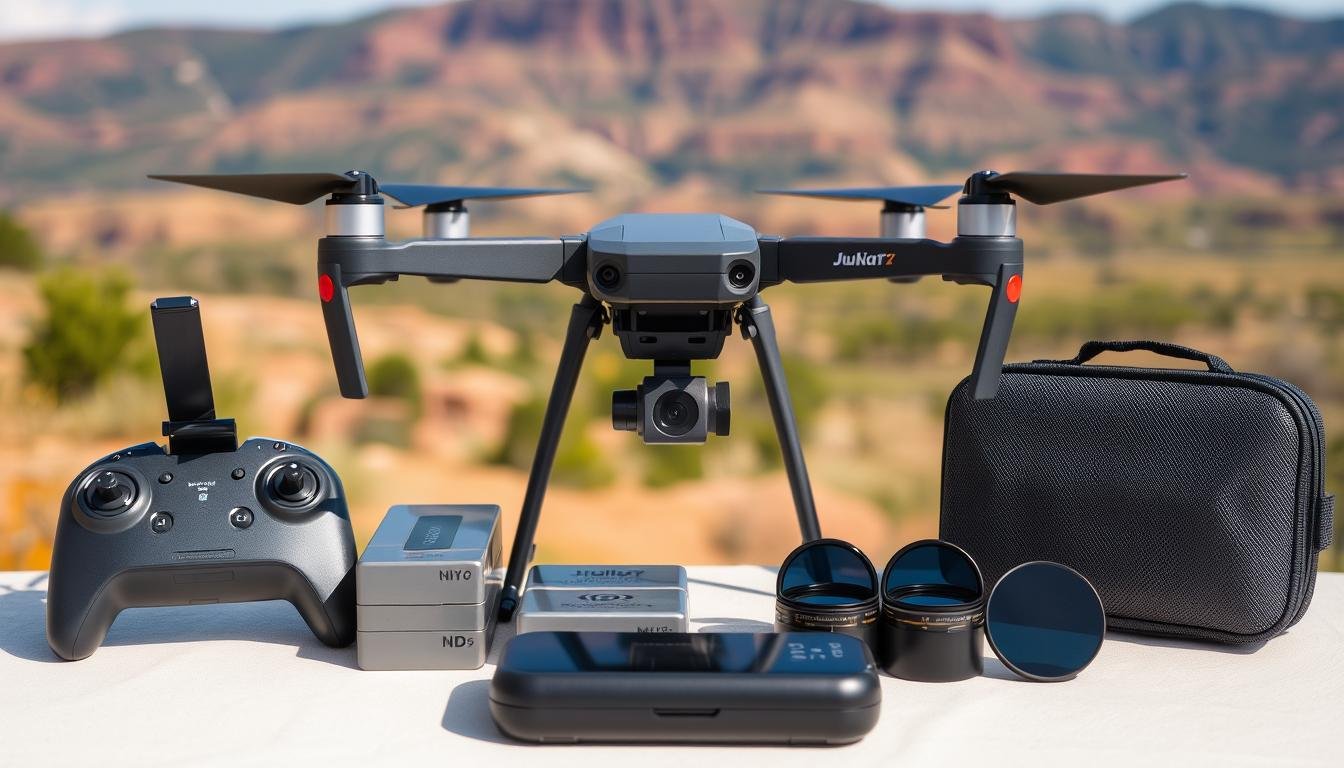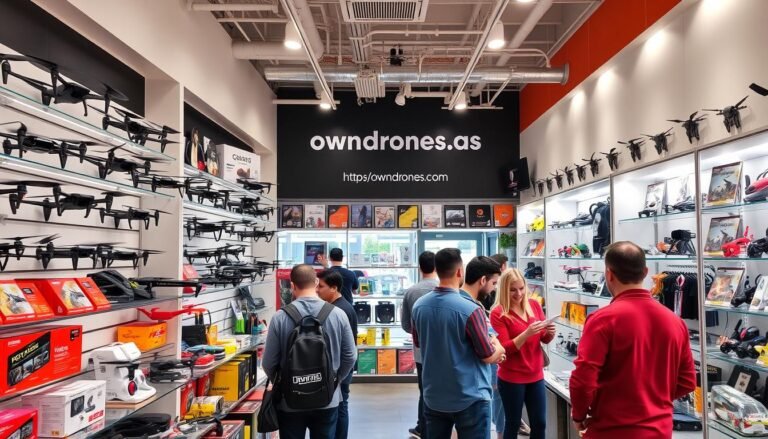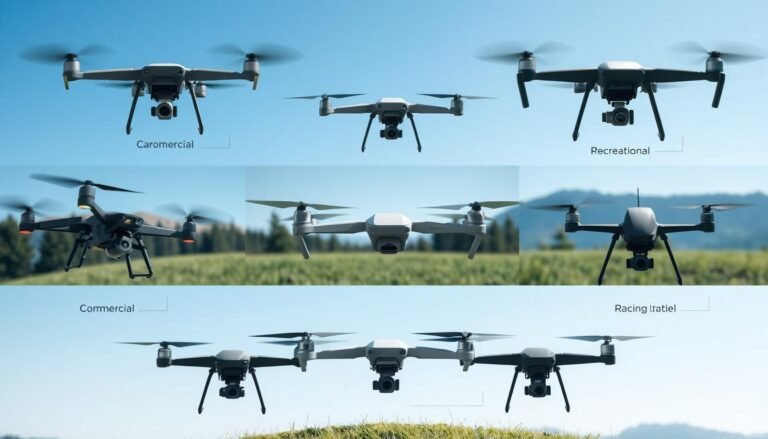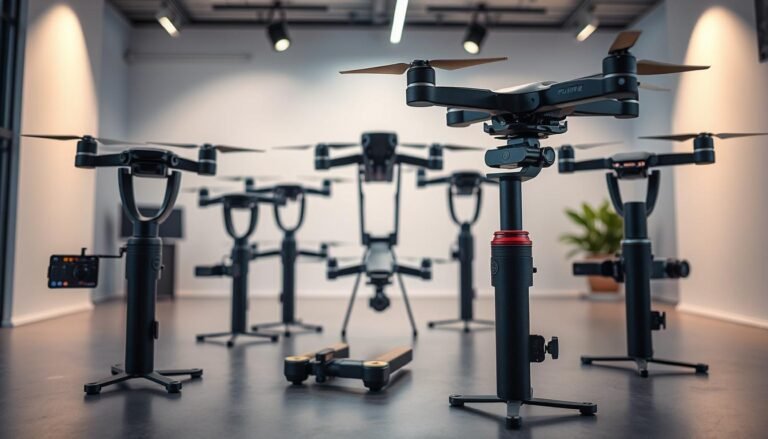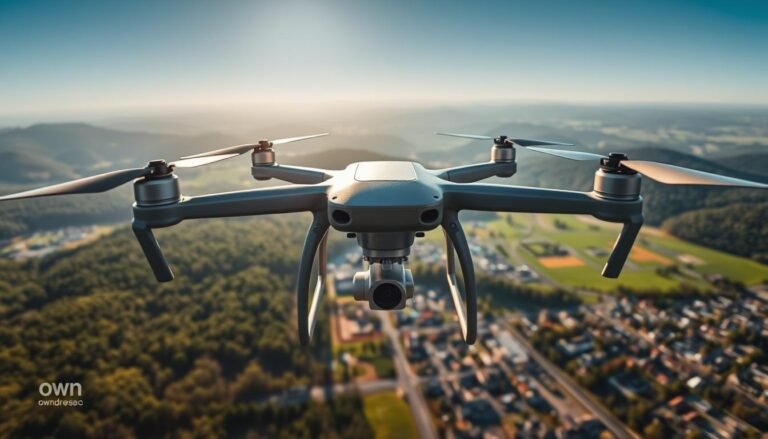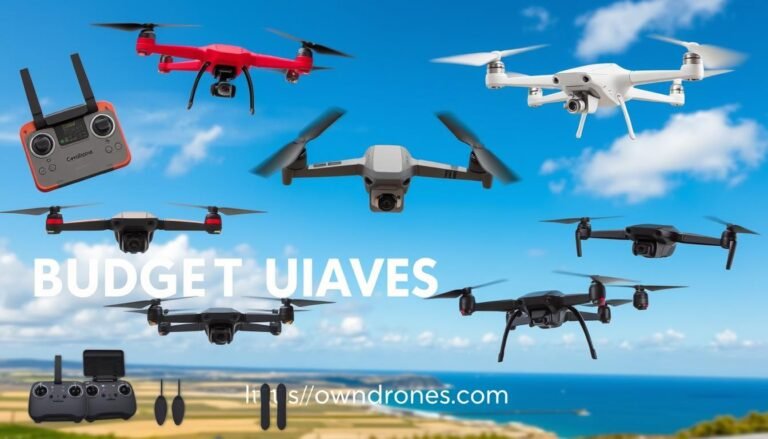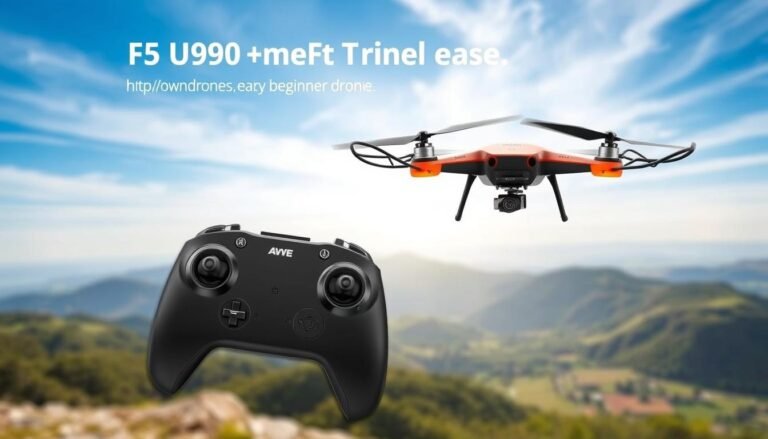Essential Drone Videography Equipment Guide 2025
Aerial videography is reaching new heights in 2025. Evolving drone tech demands up-to-date equipment for standout footage. This guide covers must-have gear for pro filmmakers and enthusiasts.
We’ll explore top UAV cameras and crucial accessories. Gimbals and filters are key for stunning aerial visuals. This guide helps navigate the expanding world of aerial filming gear.
The DJI Air 3 is a versatile all-rounder for 2025. Autel Evo Lite+ excels in low light conditions. Pros often choose the DJI Mavic 3 Pro.
Gimbals and stabilizers ensure smooth footage. ND filters create cinematic shots. Spare batteries keep your drone flying longer.
Learn optimal camera settings for top-notch video quality. Master flight techniques for cinematic shots. Discover how audio equipment captures immersive sound.
Landing pads, backpacks, and cases keep your gear safe. Know drone regulations for safe, responsible flying. Visit OwnDrones.com for the latest trends and insights.
Elevate your aerial videography with this 2025 equipment guide!
Key Takeaways
- Discover the must-have drone videography equipment for professional aerial filming in 2025
- Learn about the top drones, including the DJI Air 3, Autel Evo Lite+, and DJI Mavic 3 Pro
- Understand the importance of gimbals, ND filters, and spare batteries for optimal video quality
- Master drone flight techniques for cinematic shots and explore essential accessories
- Stay informed about drone regulations and the latest photography trends at OwnDrones.com
Understanding the Basics of Drone Videography
Drone videography has transformed aerial footage capture. It offers unique perspectives across various industries. These include real estate, event coverage, environmental monitoring, and agriculture.
Drones have become essential for professionals elevating their visual storytelling. They provide high-resolution 4K cameras and extended flight times. Advanced flight modes enable easy capture of stunning aerial shots.
Choosing the right drone is crucial for your specific needs. Today’s drones offer various features to enhance your aerial photography. Understanding different drone types will help you make an informed decision.
Types of Drones for Videography
Drones come in various shapes and sizes. Each is designed for specific purposes. Here are some common types used for videography:
- Compact and portable drones: Perfect for on-the-go filming and travel
- Professional-grade drones: Offer advanced features and superior image quality
- Fixed-wing drones: Ideal for covering large areas and mapping
- Specialty drones: Designed for specific industries like agriculture or inspection
Choosing the Right Drone for Your Needs
Consider camera quality, flight time, ease of use, and portability when selecting a drone. Look for high-resolution cameras and gimbal stabilization. Advanced flight modes enable smooth, cinematic footage capture.
Key features to consider include:
- Camera resolution and bitrate
- Gimbal stabilization for smooth footage
- Flight time and battery life
- Transmission range and reliability
- Obstacle avoidance sensors for safer flights
- Compatibility with accessories like ND filters and external microphones
Quality drone video transmitters and flight controllers are essential investments. They ensure reliable communication between the drone and remote controller. These components maintain a stable connection and enable precise control.
Understanding drone videography basics and choosing the right equipment is crucial. This knowledge will help you capture stunning aerial footage. Your work will stand out from the competition.
Top Drones for Professional Videography in 2025
Professional drone cameras are crucial for capturing breathtaking aerial footage. Three drones lead the pack for videographers in 2025. The DJI Air 3, Autel Evo Lite+, and DJI Mavic 3 Pro offer exceptional capabilities.
DJI Air 3: The All-Rounder
The DJI Air 3 is a versatile drone for various videography needs. It weighs only 724g and boasts a 45-minute battery life.
This drone has a maximum range of 20km (12.4 miles). With a top speed of 75kph (47mph), it excels at capturing fast-paced action shots.
Autel Evo Lite+: Low-Light Champion
The Autel Evo Lite+ shines in low-light conditions. Its large 1-inch sensor captures detailed, color-accurate footage in challenging lighting.
Autel Robotics has proven itself as a strong competitor. While slightly behind DJI, it offers impressive features for professional videographers.
DJI Mavic 3 Pro: The Professional’s Choice
Many professionals prefer the DJI Mavic 3 Pro for its exceptional camera quality. It offers superb aircraft stability and a user-friendly app interface.
DJI’s engineering excellence is evident in the Mavic 3 Pro. It features GPS-assisted stabilization, automatic return to home, and obstacle detection sensors.
| Drone Model | Weight | Battery Life | Maximum Range | Maximum Speed |
|---|---|---|---|---|
| DJI Mini 4 Pro | 249g | 34 minutes | 20km / 12.4 miles | 58kph / 36mph |
| DJI Air 3S | 724g | 45 minutes | 20km / 12.4 miles | 75kph / 47mph |
Selecting the right drone depends on camera quality, flight performance, and safety features. The DJI Air 3, Autel Evo Lite+, and DJI Mavic 3 Pro offer excellent options.
These top drones enable videographers to capture stunning aerial visuals in 2025. Each model provides unique advantages for professional cinematography projects.
Essential Drone Videography Equipment
The right gear is vital for capturing stunning aerial footage. A high-quality drone and key accessories can elevate your videography. These items ensure smooth footage and expand your creative possibilities.
Gimbals and Stabilizers
Drone gimbals are essential for serious aerial videographers. They keep your camera steady and level during quick movements or windy conditions. The result is smooth, professional-looking footage.
Many drones have built-in gimbals. You can also buy aftermarket options for better performance.
ND Filters for Cinematic Shots
ND filters are crucial for achieving a cinematic look. They reduce light entering the lens, allowing slower shutter speeds and wider apertures. This creates shallow depth of field and smooth motion blur.
ND filters come in various strengths. You can adapt to different lighting conditions easily.
Spare Batteries and Chargers
Always carry spare drone batteries and a reliable charger. Most drones fly for 20-30 minutes per battery. Extra batteries let you shoot longer without interruption.
Invest in a quality drone battery charger. It will quickly recharge your batteries, reducing downtime between flights.
“Drones have become an integral part of filmmaking, providing unique perspectives that engage viewers and enhance the cinematic experience.” – Rashad Al Safar, CEO of Sky Vision
Equip yourself with drone gimbals, ND filters, spare batteries, and reliable chargers. You’ll be ready to tackle any aerial videography project confidently. These accessories help capture standout footage that impresses your audience.
Drone Camera Settings for Optimal Video Quality
Mastering camera settings is key for stunning aerial footage. This applies to DJI Air 3, Autel Evo Lite+, or DJI Mavic 3 Pro drones. The right settings can greatly improve your video quality.
For best results, use at least 1080p or 4K resolution. Higher resolutions offer more detail and clarity. Frame rate affects video smoothness. Use 24fps for a cinematic look or 30fps for general 4K footage.
For slow-motion effects, try 60fps or higher. Exposure settings are crucial for well-exposed footage. Adjust ISO based on lighting conditions.
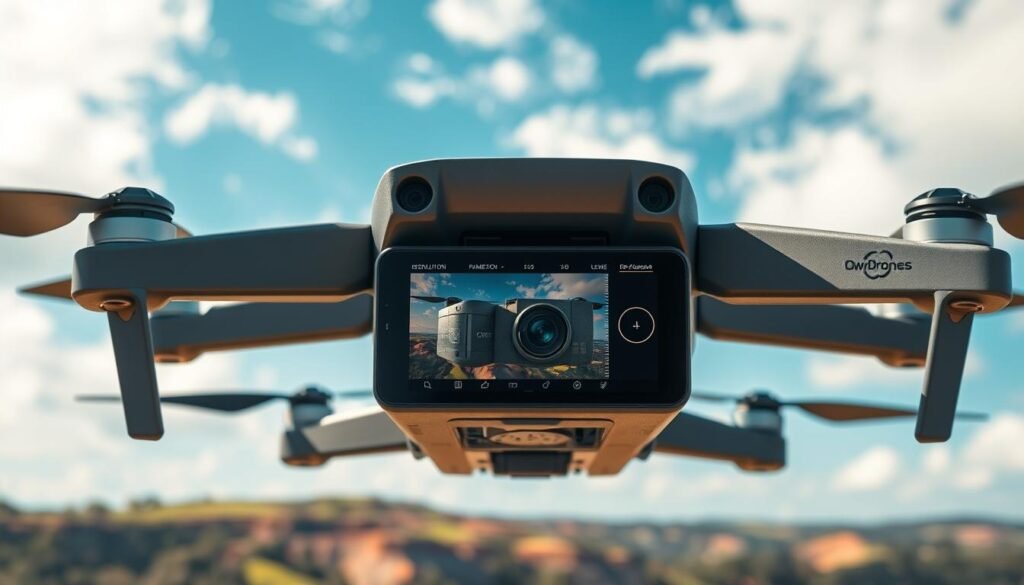
Use lower ISOs (100-200) in bright light. For low-light situations, use higher ISOs (800+). Set shutter speed based on subject or drone movement. Fast speeds (1/1000s) suit action shots.
Slower speeds (1/60s) work well for landscapes. White balance ensures accurate colors. Exposure value (EV) quickly adjusts image brightness.
| Lighting Condition | Recommended Settings |
|---|---|
| Sunrise/Sunset | ISO 400-800, Slower shutter speed |
| Strong Sunlight | ISO 100-200, Fast shutter speed |
| Overcast | ISO 400-800, Medium shutter speed |
| Low Light | ISO 800+, Slower shutter speed |
Try different combinations to find the best settings for your conditions. Shoot in RAW for maximum flexibility in post-processing. Always follow local regulations and safety practices when flying.
Mastering your drone camera settings is the key to capturing breathtaking aerial footage that will leave your audience in awe.
With these tips, you’ll create professional-quality videos with your UAV camera rig. Practice and experiment to improve your skills. Soon, you’ll be capturing amazing aerial footage.
Mastering Drone Flight Techniques for Cinematic Shots
Mastering drone flight techniques is crucial for creating captivating aerial footage. Learn various methods to add depth, movement, and visual interest to your shots. These techniques will help you capture cinematic footage that engages your audience.
Reveal Shots and Fly-Bys
Reveal shots gradually unveil a scene as your drone moves forward or upward. They’re perfect for introducing subjects or locations. Fly-bys involve flying parallel to a subject, creating a sense of speed and movement.
These techniques add drama and excitement to your shots. They draw viewers into the scene, making your footage more engaging.
Orbit and Follow Modes
Orbit mode circles a subject at a fixed distance. It creates a 360-degree view, showcasing the subject from all angles. Follow mode enables your drone to track moving subjects autonomously.
These modes are ideal for capturing dynamic footage. They work well with moving subjects like athletes or vehicles.
| Flight Mode | Description | Best For |
|---|---|---|
| Orbit | Circles a subject at a fixed distance | 360-degree views, showcasing subjects from all angles |
| Follow | Autonomously follows a moving subject | Capturing dynamic footage of athletes or vehicles |
Aerial Panoramas and Hyperlapses
Aerial panoramas stitch multiple images together to create wide, sweeping views. They’re perfect for landscapes or cityscapes. Hyperlapses combine timelapse photography with camera movement.
These techniques add scale and grandeur to your drone videography. They showcase the world’s beauty from a unique perspective.
“Mastering drone flight techniques is the key to unlocking the full potential of your aerial videography.”
Use these advanced techniques to create standout cinematic shots. Always prioritize safety and follow local drone regulations. With practice, you’ll soon capture breathtaking aerial footage like a pro.
Audio Equipment for Drone Videography
High-quality audio can boost your aerial footage significantly. The right drone audio equipment is key for capturing crisp sound. This equipment complements your stunning visuals perfectly.
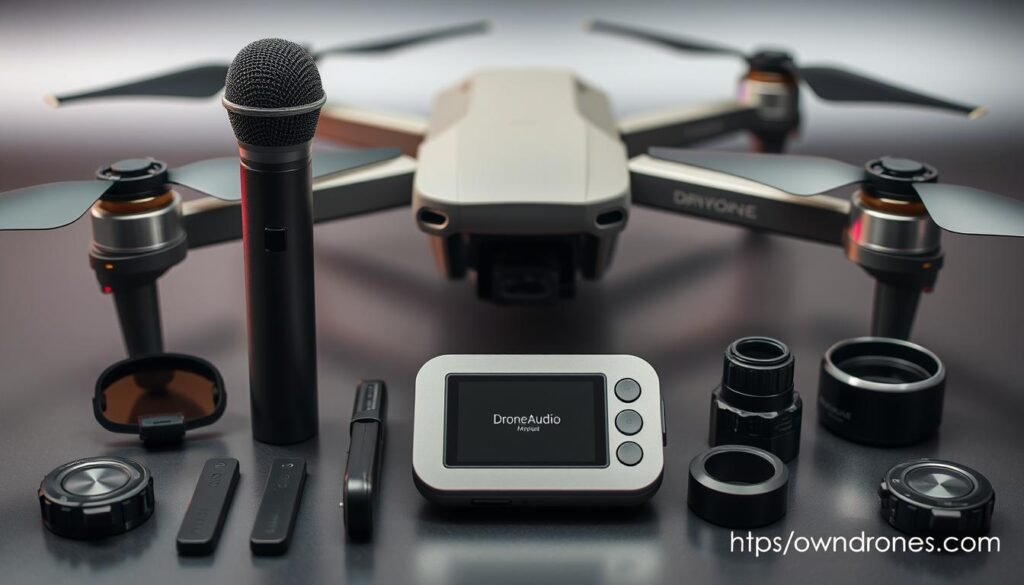
External Microphones
External microphones for drones capture audio with greater clarity than built-in ones. These can be attached to your drone for recording. They work well for ground or air recording.
Popular options include shotgun, lavalier, and wireless microphone systems. Each type serves a specific purpose in recording.
- Shotgun microphones: Directional microphones that focus on capturing sound from a specific direction, ideal for recording dialogue or interviews.
- Lavalier microphones: Small, clip-on microphones that can be attached to a subject’s clothing for hands-free audio recording.
- Wireless microphone systems: Allow you to record audio from a distance without the need for cumbersome wires.
Audio Recorders
Audio recorders for drones offer advanced solutions for high-quality sound capture. These devices can be drone-mounted or used independently on the ground.
Benefits of using audio recorders include higher audio quality and increased storage capacity. They also offer customizable settings for fine-tuning your recordings.
- Higher audio quality: Dedicated audio recorders often feature superior microphones and preamps compared to built-in drone microphones.
- Increased storage capacity: Audio recorders typically offer more storage space than drones, allowing for longer recording times.
- Customizable settings: Many audio recorders provide advanced settings for fine-tuning your recordings, such as adjustable gain and low-cut filters.
When selecting audio equipment, consider these key factors:
| Factor | Considerations |
|---|---|
| Compatibility | Ensure the microphone or recorder is compatible with your drone model and any necessary adapters or mounts. |
| Audio Quality | Look for equipment with high-quality microphones and preamps to capture clear, detailed audio. |
| Durability | Choose gear that can withstand the rigors of outdoor use and varying weather conditions. |
| Ease of Use | Consider the learning curve and setup time required for each piece of equipment. |
The right audio equipment can transform your drone videography. It helps create immersive, professional content that truly captivates your audience.
Drone Videography Accessories for Efficiency and Safety
The right accessories can boost your drone videography skills and ensure safe flights. Essential items like landing pads and protective gear optimize your workflow. They also safeguard your valuable equipment.
Landing Pads and Protective Gear
Drone landing pads provide a stable surface for takeoffs and landings. They protect your drone from rough terrain. Popular options include the Hoodman Drone Launch Pad and PGYTECH Landing Pad Pro.
Lawfig Drones Landing Pads work with many popular drone models. These include DJI Mavic Pro, DJI Phantom 3/2, DJI Inspire 2/1, and 3DR Solo drones.
Propeller guards like DJI and Autel Robotics models reduce damage risk during flights. They protect your drone and ensure safety for those nearby.
Backpacks and Cases for Transport
Dedicated backpacks and cases make transporting your drone and accessories easier. The Lowepro DroneGuard BP 250 Backpack is designed for small-size drones. It fits models like DJI Mavic Mini, Mavic Pro, and Mavic 2 Zoom.
For stronger protection, consider hard cases. The FPVtosky Hard Case for DJI Mavic 3 Pro offers robust security during transport.
| Accessory | Key Features |
|---|---|
| Hoodman Drone Launch Pad | Stable surface for takeoffs and landings |
| DJI Propeller Guards | Protects propellers and reduces injury risk |
| Lowepro DroneGuard BP 250 Backpack | Secure storage for small-size drones and accessories |
| FPVtosky Hard Case for DJI Mavic 3 Pro | Robust protection for transportation |
Investing in these accessories will enhance your efficiency in the field. They also ensure the safety and longevity of your drone equipment. These items are essential for serious drone videographers aiming to create stunning aerial content.
Post-Processing Software and Techniques
Post-processing is key to creating professional-quality drone videos. It can transform your aerial footage into stunning visual masterpieces. Let’s explore essential software and techniques for enhancing your drone videos.
Adobe Premiere Pro and Final Cut Pro
Adobe Premiere Pro and Final Cut Pro are top choices for drone video editing. These powerful programs offer specialized tools for aerial footage. They provide intuitive interfaces and extensive plugin support for seamless editing.
Color Grading and LUTs
Color grading significantly improves the visual appeal of drone videos. It allows you to adjust color balance, contrast, and saturation. Look-up tables (LUTs) are presets that instantly transform your footage’s appearance.
Experimenting with different LUTs can help achieve cinematic color grades effortlessly. This technique can give your videos a unique and captivating look.
Stabilization and Noise Reduction
Post-processing software offers advanced stabilization and noise reduction techniques. These tools smooth out unwanted camera movements and minimize grain. They ensure clean, crisp visuals, even in challenging shooting conditions.
| Software | Key Features |
|---|---|
| Adobe Premiere Pro | – Professional-grade video editing – Extensive plugin support – Advanced color grading tools |
| Final Cut Pro | – Intuitive interface – Powerful stabilization and noise reduction – Wide range of LUTs and effects |
Post-processing software unlocks the full potential of your aerial footage. It allows you to create visually stunning and professional-quality drone videos. With practice, you’ll master these techniques and elevate your drone videography.
Navigating Drone Regulations and Best Practices
Drone videography’s rising popularity calls for knowledge of current regulations and best practices. The FAA governs drone use in the US. They set rules for both fun and business flights.
Recreational drone pilots must follow these FAA rules:
- Register drones weighing more than 0.55 pounds (250 grams) with the FAA
- Fly below 400 feet to avoid interfering with manned aircraft
- Keep the drone within visual line of sight at all times
- Avoid flying in controlled airspace (near airports) without FAA authorization
- Do not fly over people or moving vehicles unless a waiver is obtained
Commercial drone pilots face extra rules. They need a Part 107 certificate after passing the FAA’s exam. Some activities may require special waivers.
To follow drone regulations and maintain best practices for drone videography, consider these tips:
| Best Practice | Description |
|---|---|
| Plan shots in advance | Consider weather conditions and time of day for optimal results |
| Use ND filters | Control light entering the camera and capture motion blur |
| Experiment with angles | Achieve unique perspectives by varying heights and angles |
| Leverage smart features | Utilize automated flight paths and panorama shots for dynamic compositions |
| Post-process your footage | Adjust exposure, contrast, color balance, and enhance clarity and saturation |
Following FAA rules, being considerate of others, and avoiding flying drones in crowded or restricted spaces are key to enjoying a safe and legal drone experience.
Staying informed about rules helps drone users avoid fines. It also promotes responsible flying. This approach ensures a positive experience for everyone.
Drone Photography Trends to Watch in 2025
Drone photography is reaching new heights in 2025. Tech advancements and demand for aerial views are driving exciting changes. Let’s explore the trends shaping the future of drone photography.
AI-enhanced drones are revolutionizing the field. These smart machines handle technical aspects, freeing photographers to focus on creativity. They can track subjects, avoid obstacles, and capture stunning shots automatically.
3D mapping is gaining traction in drone photography. Drones with advanced sensors create detailed 3D models of landscapes and buildings. This tech has wide applications in architecture, construction, and urban planning.
Photographers can use 3D mapping to create immersive virtual tours. These interactive experiences offer clients a unique perspective on various subjects.
Environmental documentation benefits from drone photography too. Drones access remote locations to capture Earth’s beauty and fragility. They monitor wildlife and document climate change effects, inspiring conservation efforts.
| Trend | Description | Impact |
|---|---|---|
| AI-Enhanced Drones | Drones with advanced AI capabilities for autonomous flight and image optimization | Enhances creativity and efficiency in drone photography |
| 3D Mapping | Creating detailed 3D models of landscapes, buildings, and objects using drones | Enables immersive virtual tours and benefits industries like architecture and urban planning |
| Environmental Documentation | Using drones to capture and monitor the beauty and fragility of our planet | Raises awareness and inspires conservation efforts |
| Cinematic Storytelling | Leveraging drones to create visually compelling narratives and engaging content | Captures audience attention and evokes emotional responses |
Cinematic storytelling is taking off in 2025. Drones offer unique perspectives and sweeping aerial shots. These elements add depth and drama to visual narratives.
Filmmakers use drones to create captivating stories. These aerial shots evoke strong emotional responses from viewers.
The sky is no longer the limit when it comes to drone photography. As technology continues to evolve, the possibilities are endless.
With these exciting trends come important responsibilities. Drone operators must follow regulations and prioritize safety. Respecting privacy is crucial when using drones.
By using drones responsibly and creatively, we unlock endless possibilities. The future of aerial photography is bright and full of potential.
Conclusion
This guide covers essential gear and top drones for aerial cinematography pros. It explores the basics of drone videography and the latest trends. The guide helps you capture stunning aerial footage.
DJI leads the drone market for video production. Popular models include the DJI Inspire 2 and Mavic series. The Skydio 2 drone stands out for its AI tracking abilities.
Future drones may feature advanced AI systems and VR/AR tech. These innovations could enhance storytelling experiences. Stay informed about these exciting developments in the field.
Mastering flight techniques is crucial for capturing the best angles. Understanding camera settings helps achieve professional results. Knowing drone regulations ensures safe and legal operations.
Invest in quality drones and essential accessories. Good post-processing software is also important. These tools will help you create professional-grade aerial footage.
Keep exploring drone videography and stay updated on new trends. This will help you improve your aerial cinematography skills. With practice, you’ll take your aerial footage to new heights.
